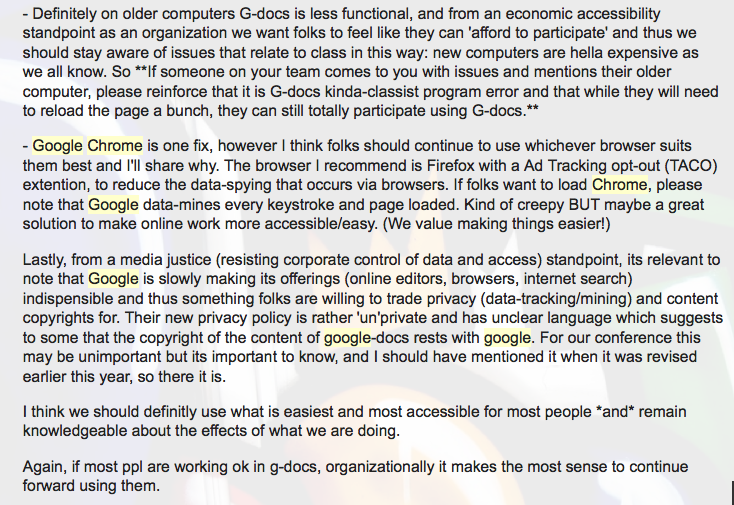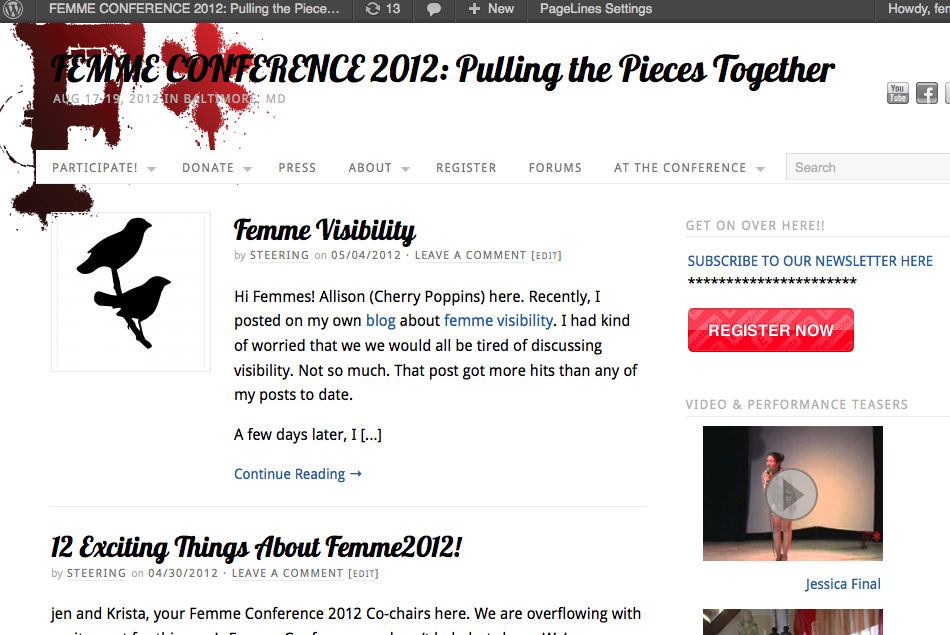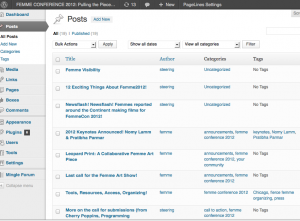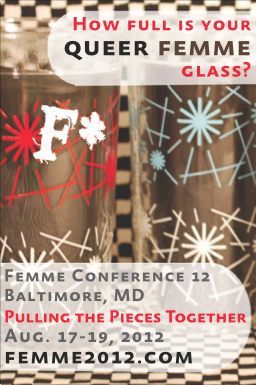We had a six-month check-in on How The Technology Was Working and to have a check-in on the data-mining creepiness that is the Googleverse.
Google Docs was acting buggy on some older computers [including mine] and from a class-accessibility standpoint, that was problematic: it’s important that participants feel they can “afford to participate” and that barriers be addressed and acknowledged.
Someone suggested that people who had trouble with google docs just “install google chrome” I took that as an opportunity to let folks know that g-chrome tracks your web movements more efficiently than any browser before and recommended Firefox with TACO add-ons. An example of a slightly didactic but gentle way to say this is:


 The Femme Conference project has a built-in, existing community of 14 core organizers and about 35 total organizers who would be interacting with this media, either by creating blog posts, content for the web pages, or using the social media to let people know about the conference.
The Femme Conference project has a built-in, existing community of 14 core organizers and about 35 total organizers who would be interacting with this media, either by creating blog posts, content for the web pages, or using the social media to let people know about the conference.